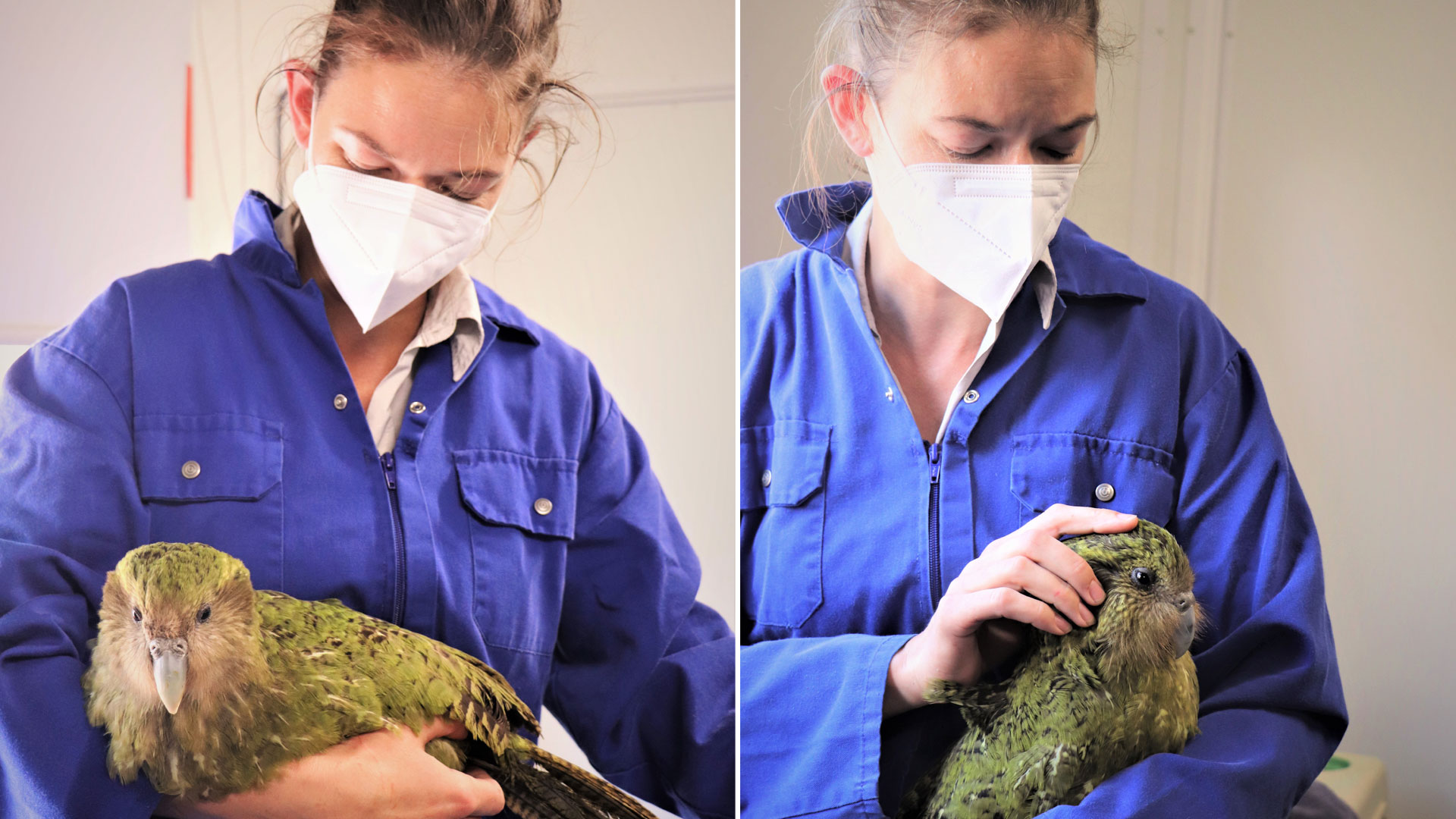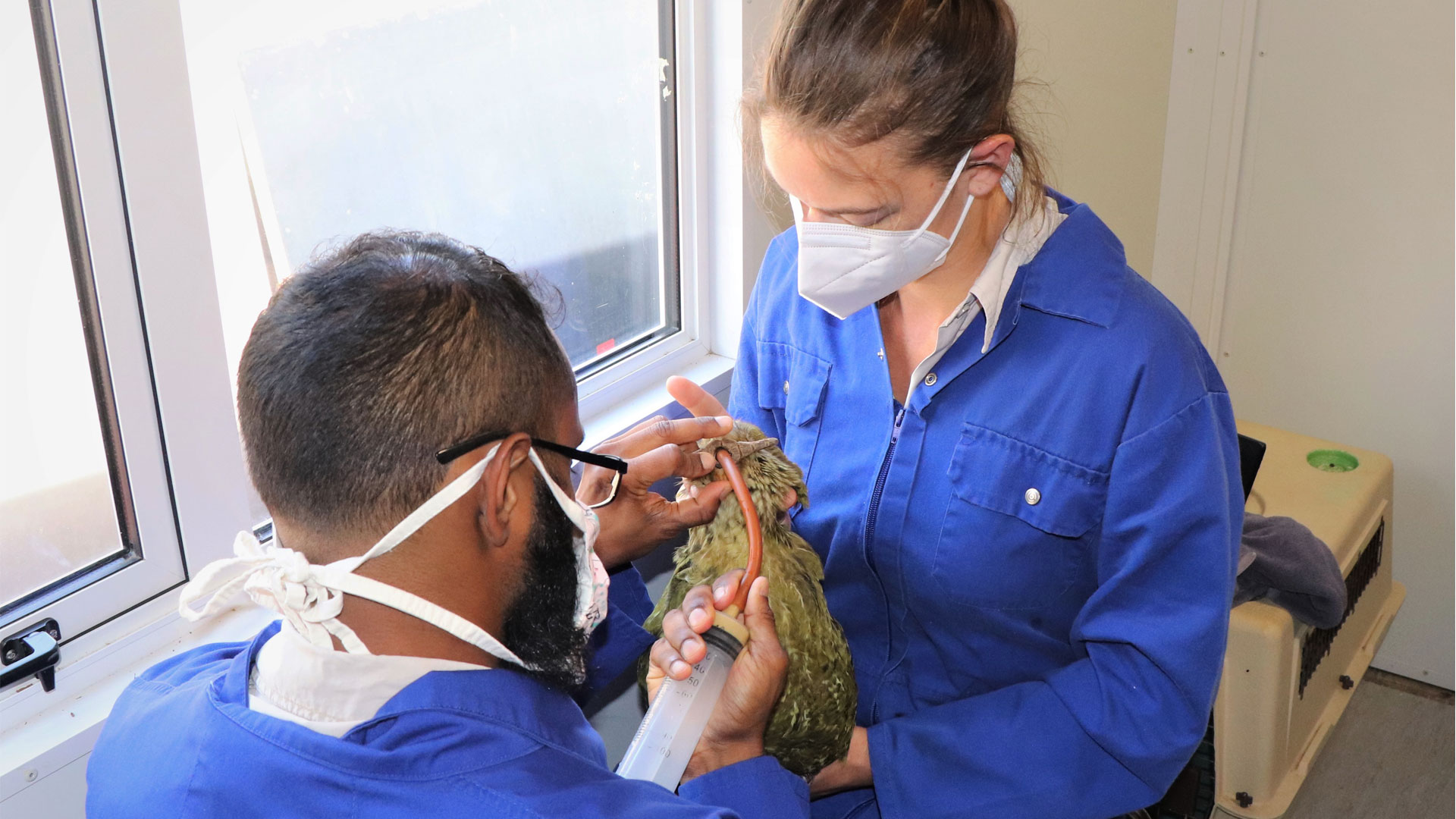You may recall Hinemoa and Mati-Mā each spent several months here at Auckland Zoo last year for this condition. They’re again being treated with antibiotics, antifungal, and pain relief medications as well as topical treatments to further aid healing. They’re also being tube-fed a high-nutrition formula twice daily along with being given plenty of their favourite browse (plants) – for perching/resting in, and to encourage eating.
Cloacitis, so far only found in kākāpō on Whenua Hou, causes inflammation of the surrounding skin and mucosal (inner) lining of the cloaca (the hole through which kākāpō excrete waste and mate/lay eggs). As you can imagine, it’s enough to make anyone grumpy!
Twelve-year-old Hinemoa squawked loudly when we recently observed vet nurse Breeze catching her up so she and veterinary resident Dr Stefan could feed and medicate the lesions. She has a particularly severe case – only weighing 1.1kg and with lesions all the way around the cloaca.
“Anyone with a bottom as sore as Hinemoa’s is naturally going to be down in the dumps and pretty grumpy,” explains the zoo’s veterinary services manager, Dr James.




